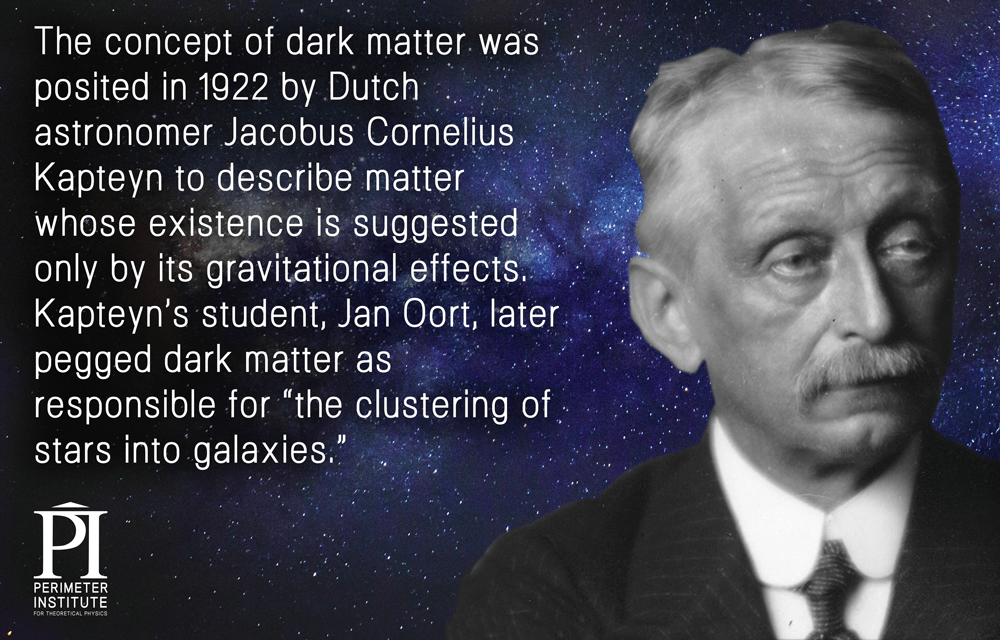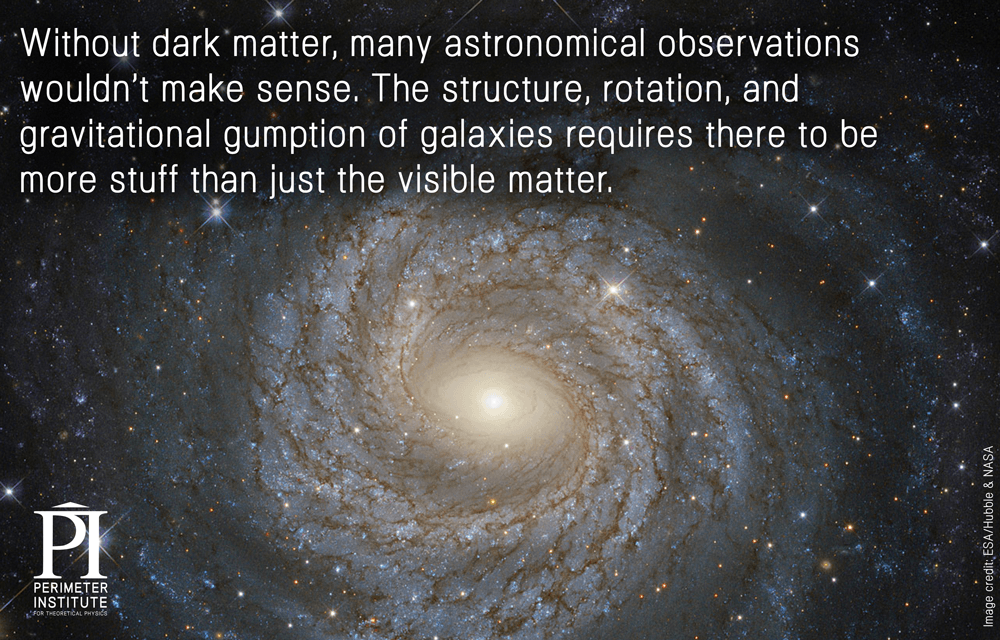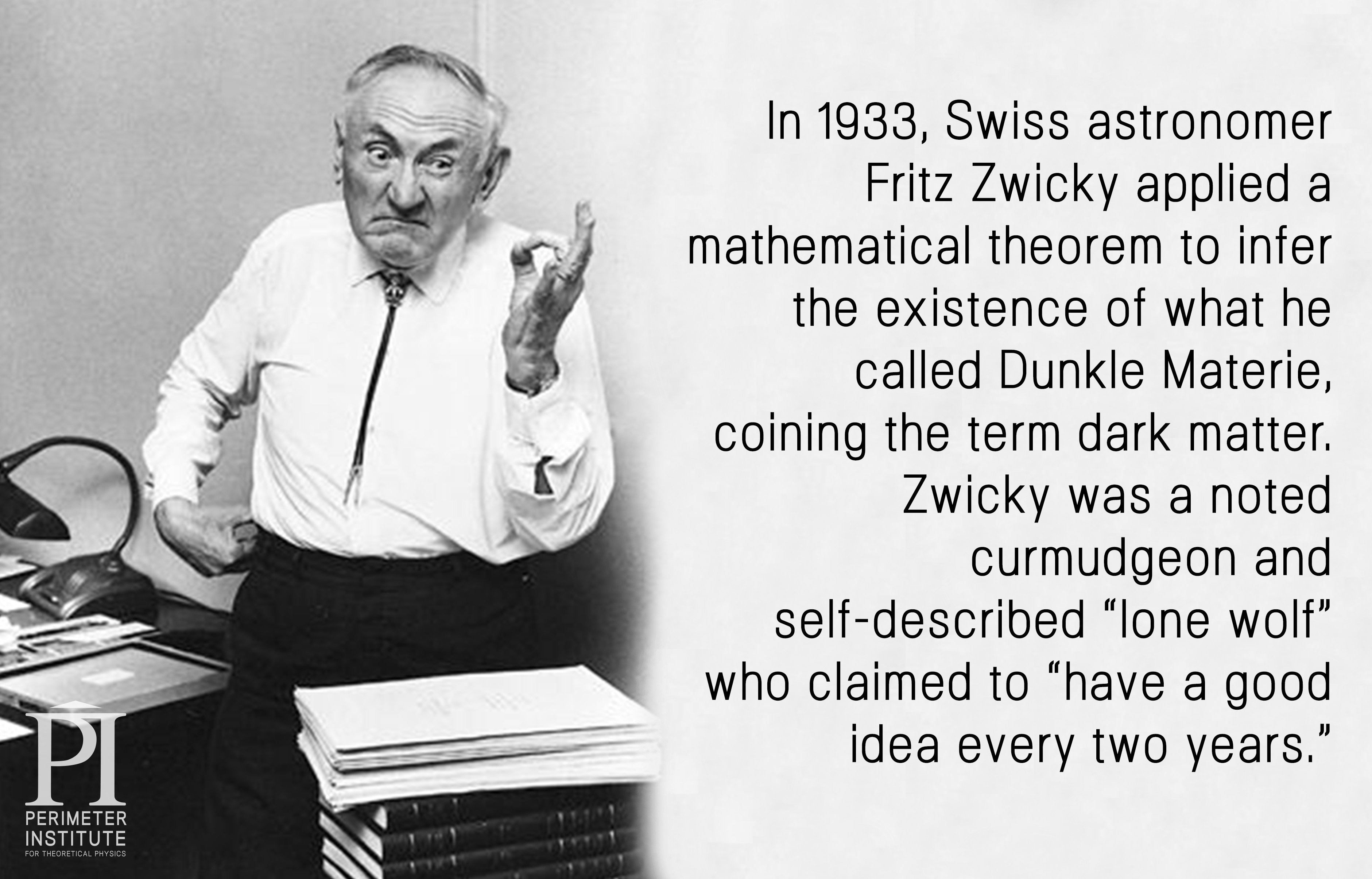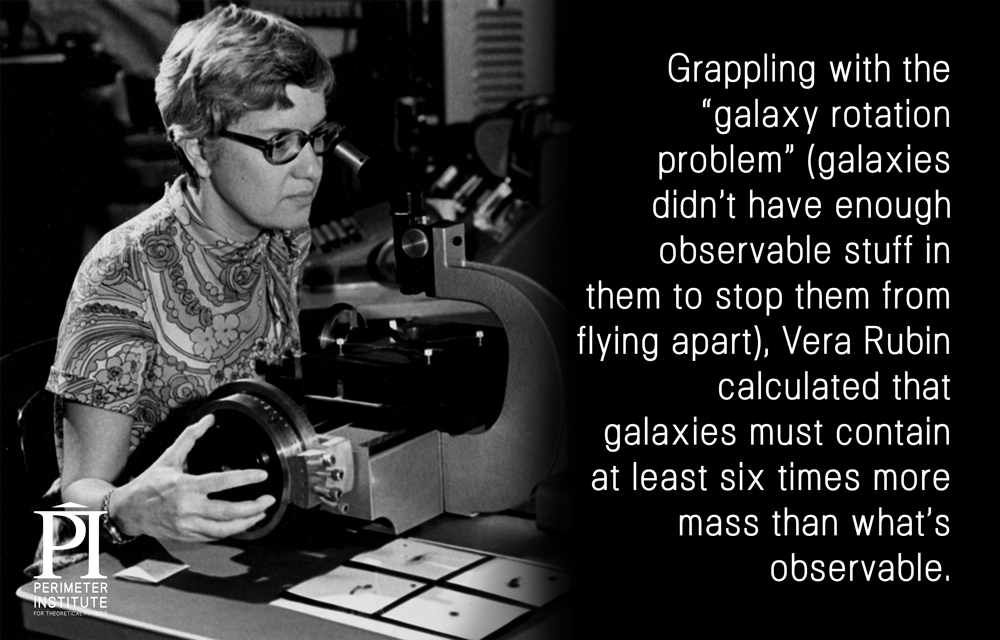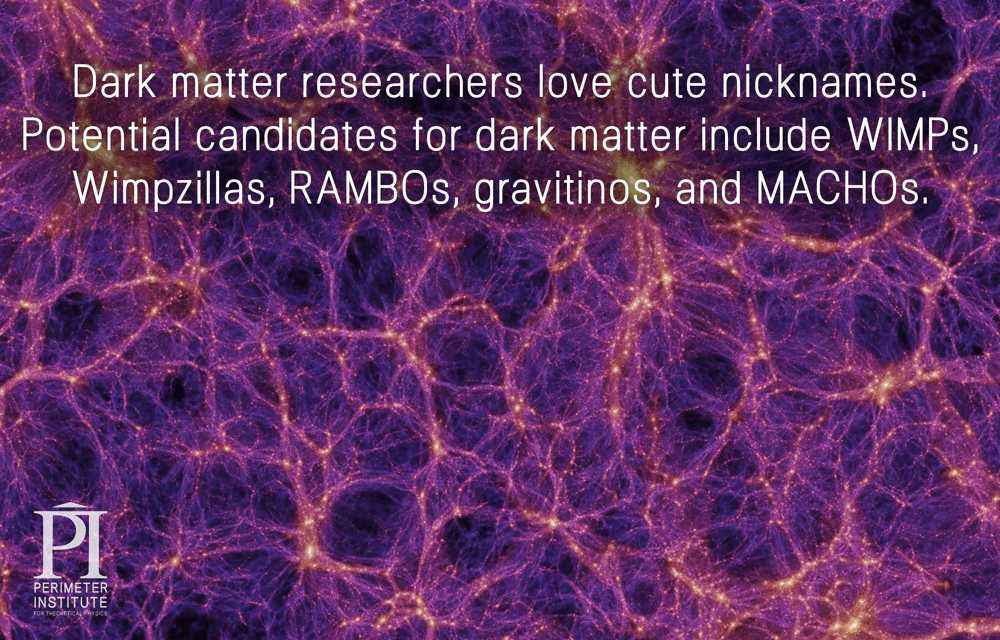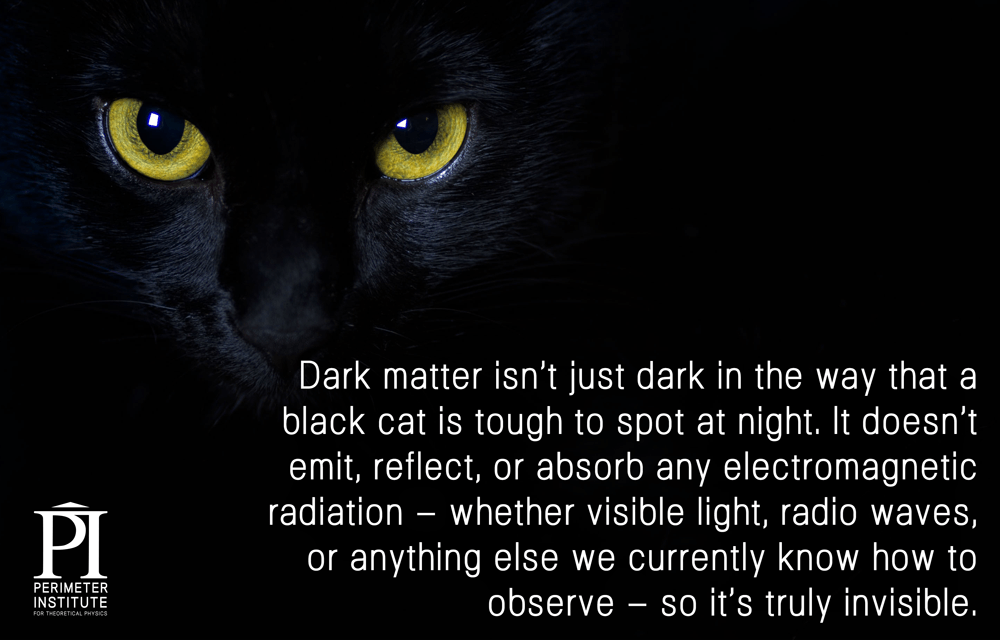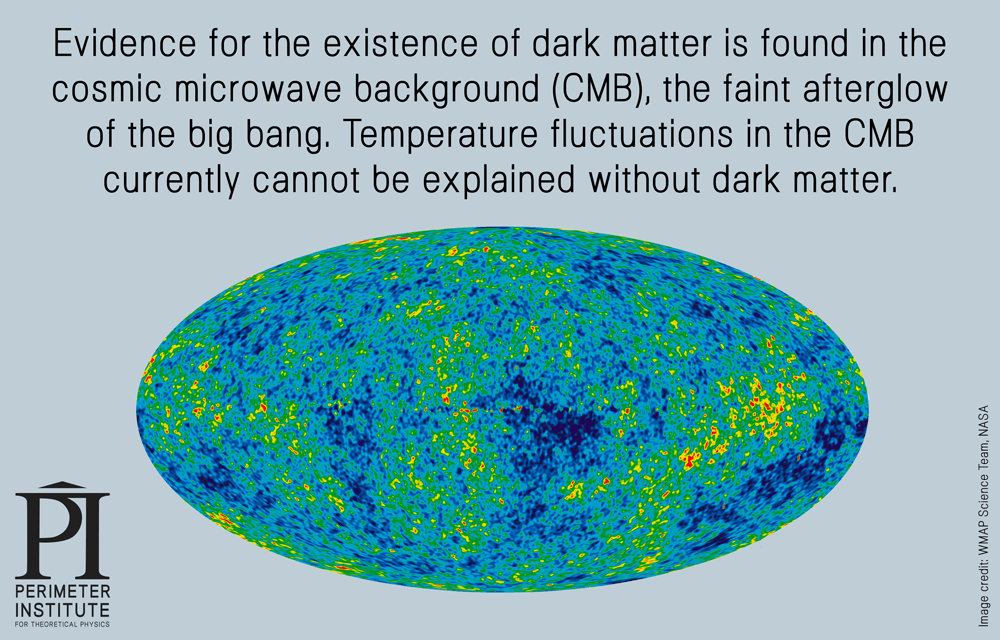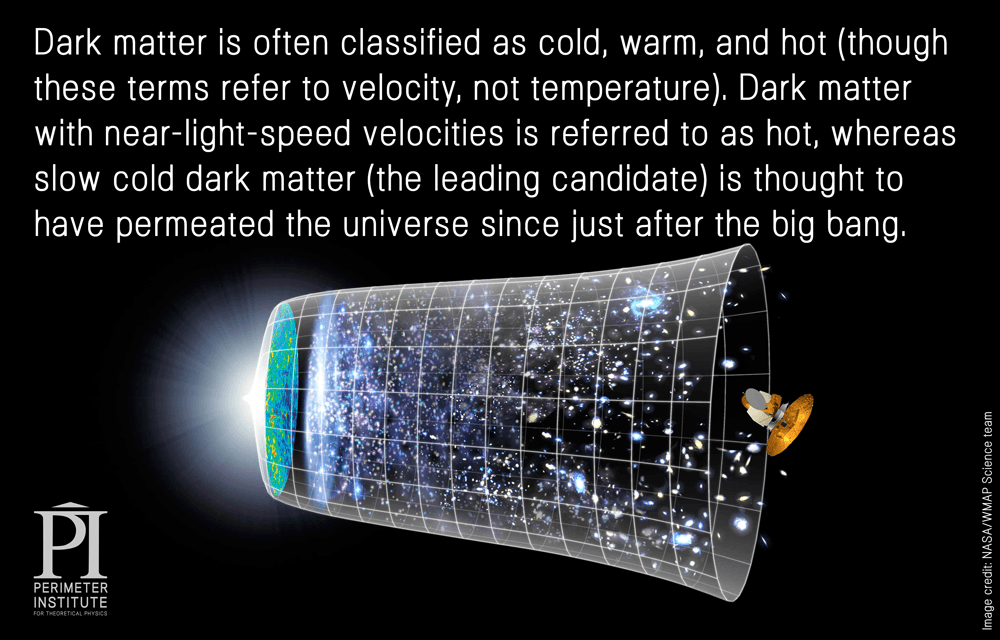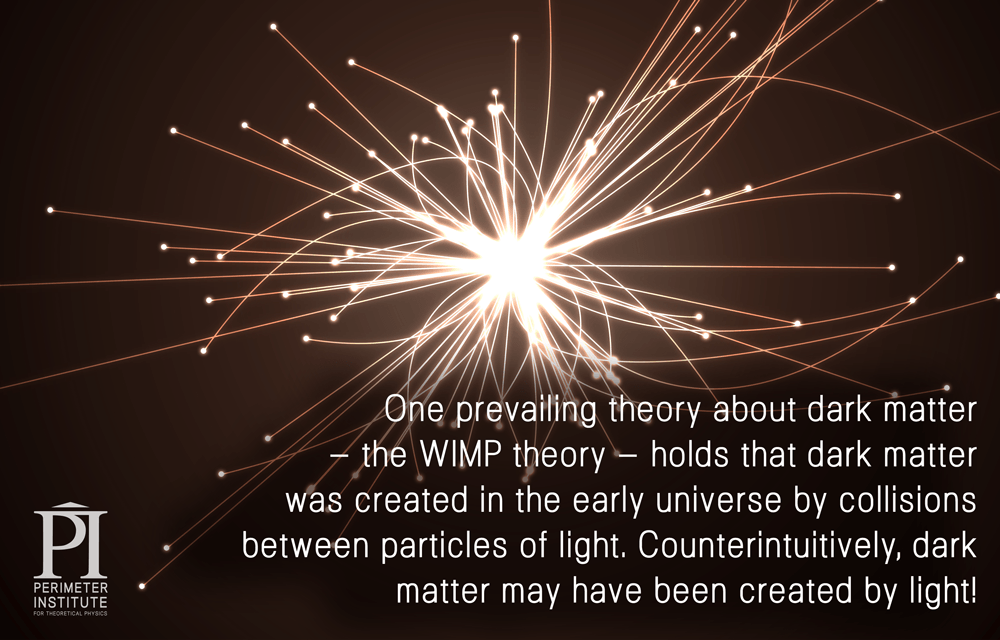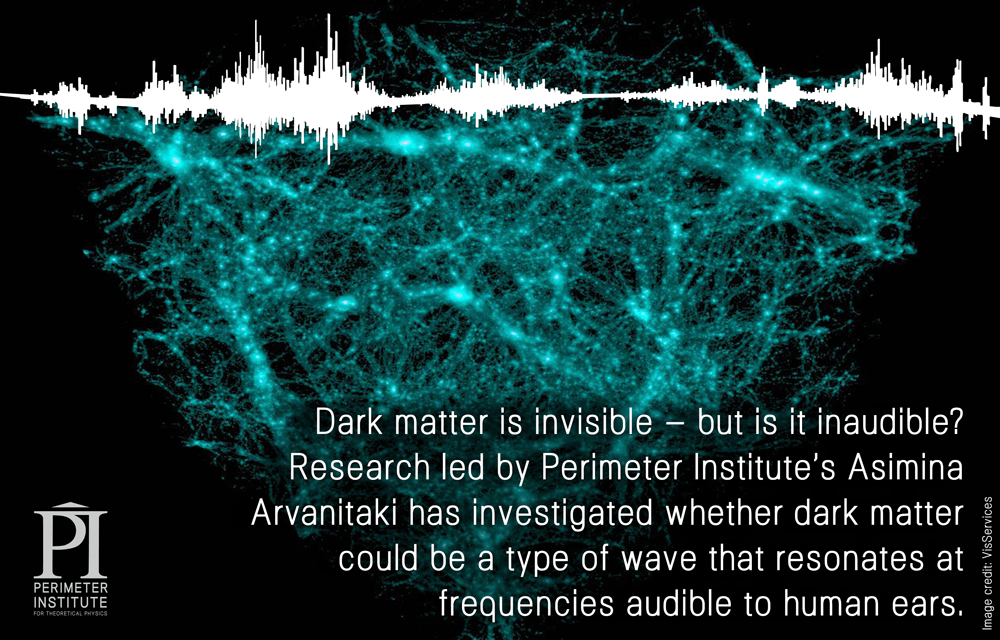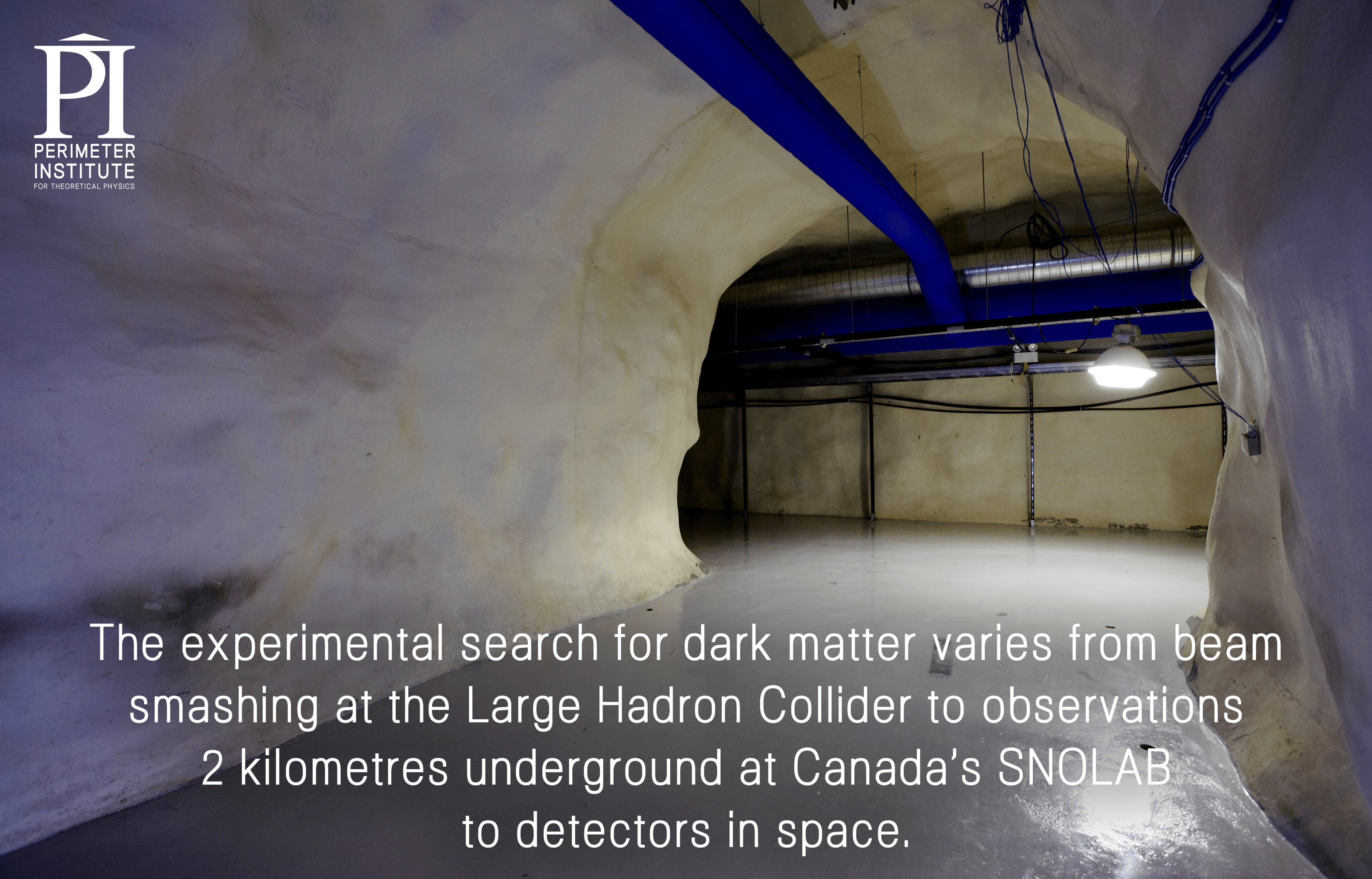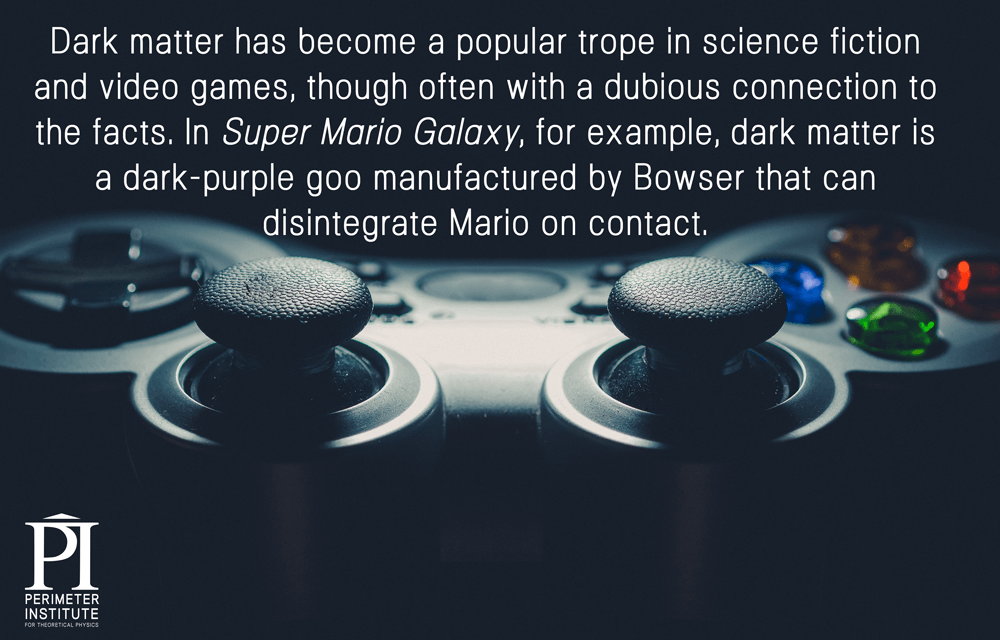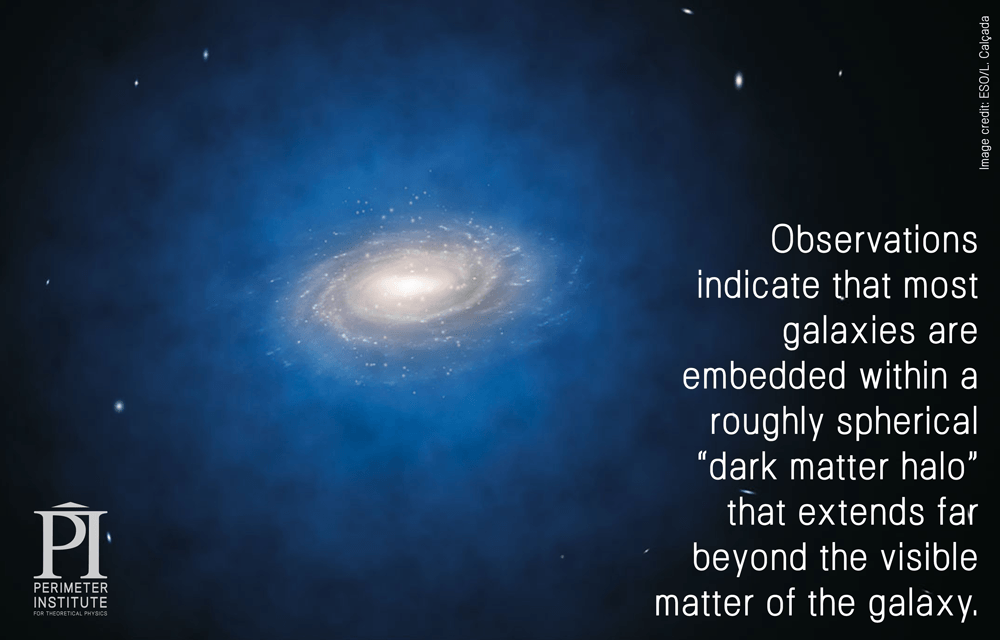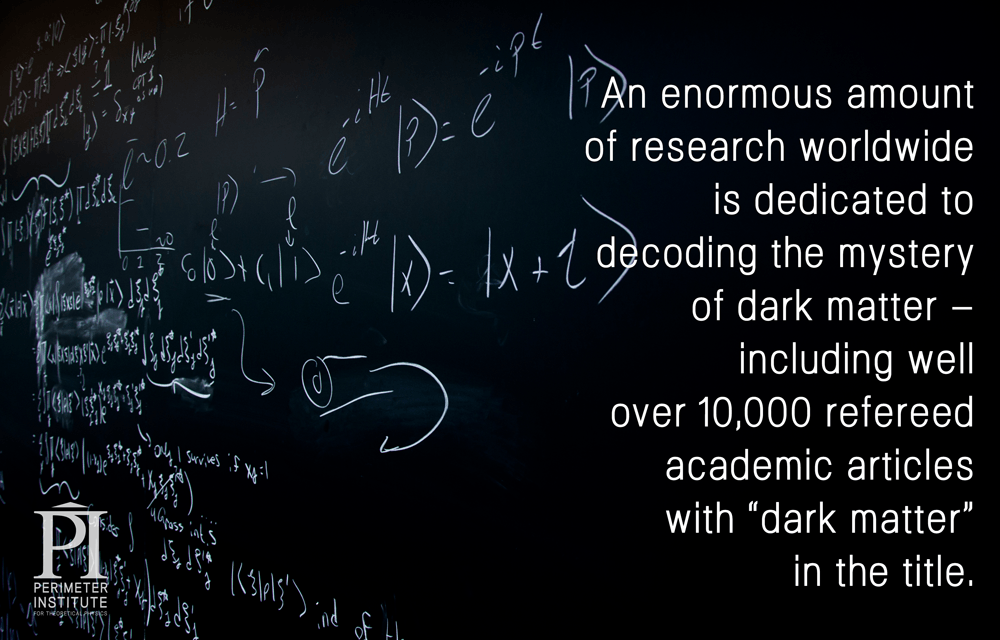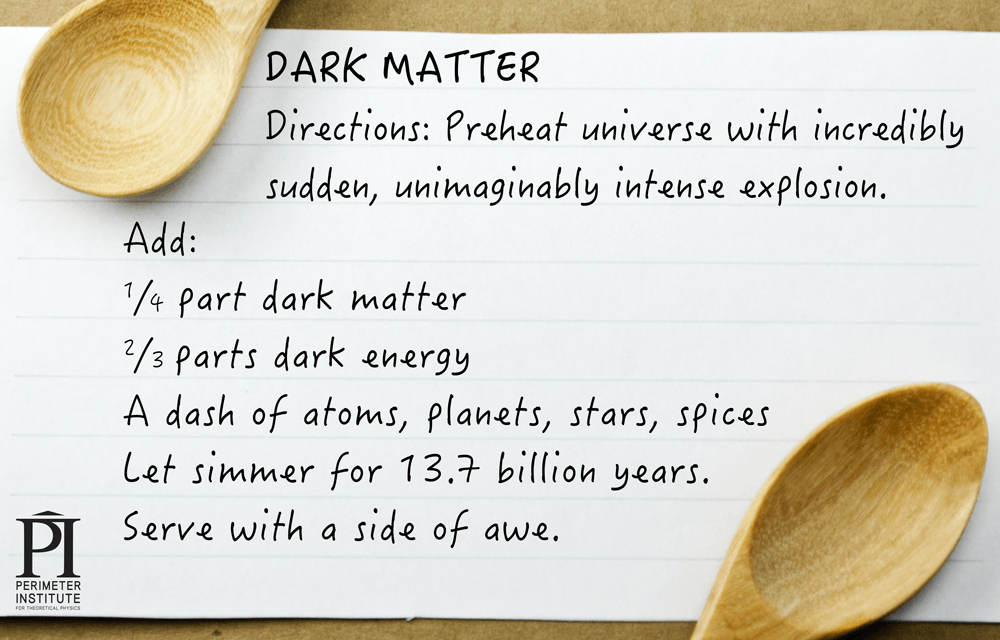The concept of dark matter is a mind-bender.
It proposes that all the stuff we’re familiar with in the universe – planets, stars, galaxies, hippopotamuses – represent just a smidgen of what’s really out there, and that the universe is mostly populated by something else that we don’t yet understand.
The existence of this abundant-but-elusive stuff is inferred by the gravitational sway it seems to exert on what we can see, and on the large-scale structure of the universe.
So what is it? Well, we’re still largely in the dark, but much research aims to shed light on the matter.
Here’s a look at what we know, and what we don’t, about one of the greatest mysteries in modern physics.
Check out Perimeter Institute’s educational resource, The Mystery of Dark Matter.
Watch an excerpt about Fritz Zwicky from a Perimeter Institute Public Lecture by Katherine Freese.
Weakly interacting massive particles (WIMPs) are a leading candidate for dark matter. Wimpzillas are, as the name implies, supermassive WIMPs. Other candidates include robust associations of massive baryonic objects (RAMBOs), gravitinos, and massive astrophysical compact halo objects (MACHOs). Less catchy, but equally intriguing, are the axion and the Kaluza-Klein particle.
Watch a public lecture by Perimeter researcher Kendrick Smith about what we have learned from the CMB.
Read more about about The Sound of Dark Matter.
Read more about the concept of hairy dark matter.
Dark Matter detectors at SNOLAB use liquid argon, charged coupled devices (CCDs), copper, and bubble chambers. Watch Nobel laureate Art McDonald’s Perimeter Institute Public Lecture on the search for neutrinos and dark matter at SNOLAB.
Check out this Business Insider article on the physics of Super Mario World.
Watch “The Dark Side of the Universe,” a Perimeter Institute Public Lecture by Katherine Freese, delivered March 2, 2016.
About PI
Perimeter Institute is the world’s largest research hub devoted to theoretical physics. The independent Institute was founded in 1999 to foster breakthroughs in the fundamental understanding of our universe, from the smallest particles to the entire cosmos. Research at Perimeter is motivated by the understanding that fundamental science advances human knowledge and catalyzes innovation, and that today’s theoretical physics is tomorrow’s technology. Located in the Region of Waterloo, the not-for-profit Institute is a unique public-private endeavour, including the Governments of Ontario and Canada, that enables cutting-edge research, trains the next generation of scientific pioneers, and shares the power of physics through award-winning educational outreach and public engagement.
You might be interested in



